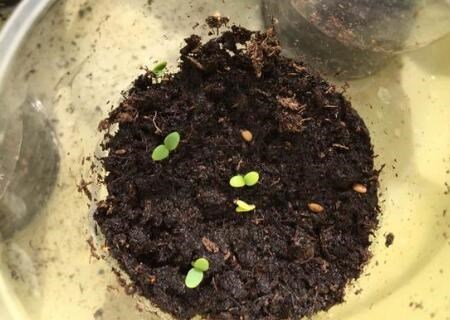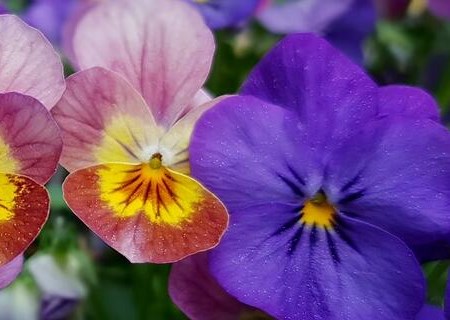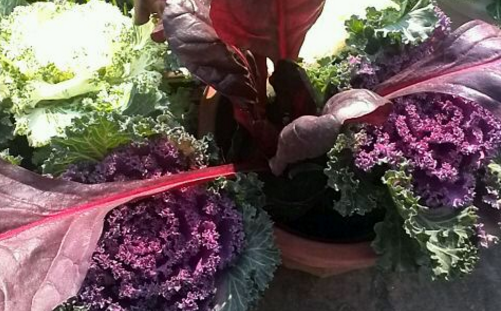Cruciferae Learn more about Cruciferae
-
Are there many species of shepherd's purse in Cruciferae? What are the key points of domestication and cultivation techniques?

Shepherd's purse, also known as nursing grass, local vegetables, rice vegetables, water chestnut, etc., Cruciferae, shepherd's purse, annual or biennial herbs. Wild shepherd's purse can not meet the demand of commercialization, so high commercial shepherd's purse can be produced by domestication and cultivation techniques to meet the market demand.
2020-11-09 Cruciferae Capsella plants Shepherd's purse many species domestication -
What are the planting methods of flower seeds of Cruciferae bees? What kind of environment is suitable for? When will the seeds be sown?

Bee chamber flowers, Cruciferae biennial herbs, dense branches and leaves, short plants, dense flowers. It is widely cultivated in courtyards and gardens. So do you know what are the methods of planting beehive flowers? What kind of environment is suitable for? When will the seeds be sown? According to the information of the Plant Research Institute, if you are in the area
2019-03-18 -
What are the seed planting methods of Cruciferae violets? How do you trim it? What varieties do you have?

Violet, Cruciferae, Violet biennial or perennial herbs. The whole plant is densely gray-white stipitate branched pilose. Do you know the methods of planting Violet seeds? How do you trim it? What varieties do you have? Native to the Mediterranean coast. Widely cultivated in southern China, one of the famous European flowers
2019-03-18 -
The difference between turnip and cabbage

Kohlrabi and cabbage, as common vegetables, belong to Cruciferae herbs. So what's the difference between the two? The following will be introduced by the editor. 1. Kohlrabi is Brassica cruciferae, belonging to annual or biennial.
2020-11-09 Cabbage cabbage -
Planting date of overwintering cauliflower

Cauliflower is an annual plant of Brassica in Cruciferae, native to the eastern Mediterranean coast and introduced to China in the early 19th century. When will overwintering cauliflower be planted? 1. Growth habits of cauliflower cauliflower as an annual plant of Brassica in Cruciferae
2020-11-08 Overwintering cauliflower planting date yes Cruciferae -
What varieties are there in Cruciferae collard greens? Can I cut it? Can I eat it?

Kale is called peony, cabbage, green kale, so what are the varieties of kale? Can I cut it? Can I eat it? According to information, kale likes cold climate, cold tolerance is relatively strong, so in the cold winter, people can also see it growing. Kale can endure shade.
2019-03-16 -
Cultivation techniques of cabbage in autumn

Cabbage is an annual or biennial herb of Brassica in Cruciferae. It originates from the Mediterranean coast and has the advantages of high yield, easy management and strong adaptability. At present, it has been widely cultivated in various parts of our country, mainly in autumn, winter and spring.
2020-11-08 Autumn cabbage cultivation techniques heading cruciferae -
What is kale? What is the planting method?

Cabbage, also known as cauliflower, cabbage, lotus white, kohlrabi, cabbage, west soil blue and so on, is a plant of Brassica cruciferae, which can be used for cooking and fodder. some varieties have bright leaves and can be used as ornamental products with high ornamental value. So, what is kale?
2020-11-09 Cabbage what is it planting method yes how kale also known as -
Scientific Control of soft Rot of Chinese Cabbage

Chinese cabbage, Brassica napus of Cruciferae, originated in northern China, is a traditional vegetable in China. Chinese cabbage was first called song, but Isatis indigotica is not exactly today's cabbage. Modern cabbage is generally divided into cabbage and pakchoi. Northerners generally call cabbage cabbage.
2020-11-08 Chinese cabbage soft rot disease science control cabbage cruciferae -
Can I eat radish raw?

Radish is a biennial or annual herb of the genus Cruciferae, which is a kind of vegetable that we often eat in our daily life. The original species of radish originated from the warm coasts of Europe and Asia, but now it has been widely cultivated in the world. Radish
2020-11-08 Radish can be eaten raw Mo radish belong to Cruciferae genus -
The latest field management of shepherd's purse

Shepherd's purse is an annual and biennial herb of Cruciferae, and shepherd's purse is a popular wild vegetable. Because shepherd's purse has high nutritional value, it is a high-fiber vegetable, and its food fiber content is very high. It also has the effects of diuresis and hemostasis, heat clearing and detoxification and so on.
2020-11-10 The latest shepherd's purse field management yes Cruciferae -
Early prevention of freezing injury of rapeseed

Rape, also known as rape, sowthistle, Latin name: Brassica campestris L. Cruciferae, Brassica plants, native to China, its stem color dark green, such as cabbage, is a variety of cruciferous cabbage, flowers are yellow. In agronomy, the seeds of plants contain oil.
2020-11-08 Rape freezing injury need to be early prevention rape also known as oil cabbage sowthistle -
The latest course of Maka's High-yield planting techniques and methods

Maka is an annual to perennial herb or semi-shrub of the genus Cruciferae. It has a lot in common with other plants of the genus Cruciferae. It is native to high-altitude mountain areas and is suitable for high altitude, low latitude, high diurnal temperature difference, slightly acidic sandy soil and Yang.
2020-11-10 The latest Maka high yield planting techniques methods tutorials for -
Is kale a turnip?

Kale is a vegetable that is often eaten, so is kale a turnip? What are the growth habits of cabbage? Let's get to know it together. Is kale a turnip? Kale is a turnip. Kohlrabi is another name for cabbage, in addition, some areas also use
2020-11-08 Cabbage yes kohlrabi cabbage is a kind of often eaten -
Is beef cabbage cabbage?

Usually when buying vegetables, you can often see the names of beef cabbage and cabbage in the vegetable market, so is beef cabbage cabbage? What's the difference if it's not? Is beef cabbage cabbage? Beef cabbage is a variety of cabbage, both of which are ten
2020-11-08 Beef heart vegetable yes cabbage Mo usually when buying vegetables often but -
The difference between beef cabbage and cabbage

Bovine cabbage and cabbage both belong to Brassica cruciferae, both of which are heading cabbage, but there are many varieties of cabbage, and bovine cabbage is one of them. Cabbage is round and white, while beef cabbage is kidney-shaped and green. Cabbage is usually fried with beef heart.
2020-11-09 Beef heart vegetable and cabbage difference beef heart and -
The difference between beef cabbage and cabbage

Beef cabbage and cabbage are both vegetables, and both belong to Brassica cruciferae. They look very similar in appearance. Is there any difference between them? The following is to introduce the difference between beef cabbage and cabbage. The difference between beef cabbage and cabbage
2020-11-09 Beef heart vegetable and cabbage difference beef heart -
What is watercress?

Watercress is also known as watercress, also known as oriental grass, watercress and so on. It is a perennial aquatic herb in the genus Brassica juncea of Cruciferae. Western cuisine originated in Europe and was introduced to China by Portugal in the 19th century. It is found in China, India and many parts of Southeast Asia.
2020-11-09 West watercress what is it vegetable also known as Douban -
Taboos on the use of common pesticides

1. Chlorpyrifos is easy to cause drug damage when used in melon seedling stage, and it should be avoided in the flowering stage of some crops. two。 The pesticide of triazophos is not suitable to be used in sugarcane, which is easy to cause drug damage. 3. Because phoxim is easy to decompose in visible light, it should be avoided in watermelon growing period, radish and leafy vegetable seedling stage (even in growing period.
2018-07-16 -
Prevention and control of primrose mosaic disease

The symptoms occurred in the whole plant. The leaves are small, deformed, with dark green markings and yellowing. The diseased plant does not blossom, even if it blossoms, there are markings on the flowers, and the flowers are short and deformed. The pathogen is cucumber mosaic virus CMV. There are more than 190 species of dicotyledonous and monocotyledonous herbs and woody plants belonging to 45 families, such as Cucurbitaceae, Solanaceae, Compositae, Cruciferae, Rosaceae, Liliaceae and so on. There are more than 80 kinds of aphids in the route of transmission, but the main transmission vectors are peach aphid and cotton aphid. The source of infection is mainly surrounding weeds. Prevention and cure
2019-01-16
